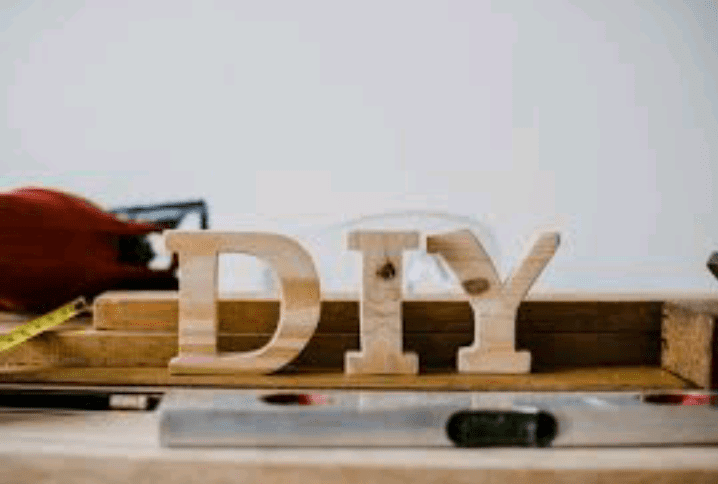What does DIY stand For? At first glance, it might seem like a straightforward question with a simple answer: Do It Yourself. But delve a little deeper, and you’ll find that these three letters encapsulate a world of creativity, empowerment, and resourcefulness. DIY isn’t just a term; it’s a mindset that has permeated various aspects of our lives, from home improvement projects to crafting and technology endeavors.
The essence of DIY lies in the idea that individuals can take matters into their own hands, creating, building, and innovating independently. It’s a concept that has evolved over time, finding its roots in historical self-sufficiency and gaining prominence in the mid-20th century during an era of post-war home improvements.
This article aims to unravel the layers of DIY, exploring its historical origins and its impact on modern life. Beyond the acronym, we will delve into the diverse domains where DIY flourishes – from home renovations to electronics, fashion, and beyond. But DIY is not just about tangible outcomes; it’s a journey of skill development, continuous learning, and personal fulfillment.
As we embark on this exploration, we’ll also consider the economic implications of DIY, how it can lead to cost savings and even spur entrepreneurial ventures. However, with the benefits come challenges, such as the importance of safety and the need to consider the environmental impact of DIY projects.
In a world where technology is advancing rapidly and the definition of creativity is constantly expanding, understanding what DIY stands for goes beyond a simple phrase. It encapsulates a dynamic philosophy that empowers individuals to shape their surroundings, cultivate skills, and contribute to a culture of self-sufficiency and innovation. So, let’s unravel the mysteries behind those three letters and discover the rich tapestry that is DIY.
Read also: DIY Bed Frame: Building Comfort and Style
What Does DIY Stand For

1. The Genesis of DIY
A. Historical Roots
To comprehend the essence of DIY, we must delve into its historical roots. The concept of individuals taking matters into their own hands can be traced back through the annals of time. From ancient civilizations where self-sufficiency was a necessity to the industrial revolution’s impact on craftsmanship, the inclination to create, build, and innovate independently has been an inherent part of human nature.
B. DIY in the Modern Era
The term “Do It Yourself” gained prominence in the mid-20th century, marking a shift in societal attitudes toward self-reliance. The aftermath of World War II saw a surge in home improvement projects as returning soldiers sought to build and customize their homes. This era laid the groundwork for the modern DIY movement, emphasizing the joy of creating, repairing, and improving with one’s own hands.
2. DIY in Various Domains
A. Home Improvement
Perhaps the most familiar arena for DIY enthusiasts is home improvement. From simple repairs to ambitious renovations, DIY empowers individuals to transform their living spaces according to their vision. Tutorials, guides, and online communities have further democratized home improvement, enabling even novices to tackle complex projects.
B. Crafting and Hobbies
DIY extends beyond the realm of functionality into the world of creativity and self-expression. Crafting, art, and hobbies have become thriving DIY communities, fostering a sense of accomplishment and personal satisfaction. Whether it’s knitting, painting, or building intricate models, DIY provides an avenue for individuals to showcase their talents and nurture their passion.
C. Technology and Electronics
Advancements in technology have catalyzed a surge in DIY projects within the realm of electronics. From building custom computers to crafting personalized gadgets, the DIY ethos has found a new frontier. Open-source platforms and maker communities have played a pivotal role in democratizing technology, making it accessible to enthusiasts of all skill levels.
D. Fashion and Personal Style
DIY has permeated the world of fashion, challenging the conventional notion that style is exclusively the domain of designers. Upcycling, repurposing, and creating one’s wardrobe items have become popular manifestations of DIY in the realm of personal style. Online platforms and social media have given rise to a vibrant community of fashion DIYers sharing their creations and inspiring others.
3. The Educational Value of DIY
A. Skill Development
One of the core tenets of DIY is the emphasis on skill development. Engaging in hands-on projects cultivates a diverse skill set, from basic carpentry and electrical work to more specialized skills like coding or sewing. DIY not only imparts practical skills but also fosters problem-solving abilities and a resilience to face challenges head-on.
B. Lifelong Learning
DIY embodies the spirit of lifelong learning. The pursuit of new projects and challenges constantly pushes individuals to acquire new knowledge and refine existing skills. In a rapidly evolving world, the ability to adapt and learn independently is a valuable trait, and DIY serves as a dynamic platform for continuous education.
Read also: DIY Solar System: Harnessing the Power of the Sun
4. The Economic Implications of DIY
A. Cost Savings
An undeniable allure of DIY lies in its potential for cost savings. Whether it’s repairing household items, creating homemade gifts, or undertaking major projects, the DIY approach often proves more economical than outsourcing tasks to professionals. This financial benefit resonates with individuals seeking to maximize their resources and reduce unnecessary expenditures.
B. Entrepreneurship
The DIY ethos has spurred a wave of entrepreneurial endeavors. Individuals who master a particular skill or craft often turn their passion into a business. Platforms like Etsy and local markets provide DIY entrepreneurs with avenues to showcase and sell their creations, fostering a culture of small-scale, independent business ventures.
5. Challenges and Considerations in DIY
A. Safety and Risk Management
While DIY embodies the spirit of empowerment, it is crucial to acknowledge the importance of safety and risk management. Undertaking projects without proper knowledge or precautions can lead to accidents and injuries. DIY enthusiasts are encouraged to prioritize safety, use appropriate protective gear, and seek professional advice when necessary.
B. Environmental Impact
In the pursuit of DIY, considering the environmental impact of materials and processes is paramount. Conscious choices, such as upcycling, recycling, and using sustainable materials, contribute to a more eco-friendly approach. DIY advocates are increasingly recognizing the importance of minimizing their ecological footprint.
6. The Future of DIY
As we peer into the future, it is evident that DIY will continue to evolve and adapt to the changing needs of society. The rise of digital platforms, augmented reality, and artificial intelligence will likely reshape how individuals approach DIY projects. Virtual communities, 3D printing, and collaborative online platforms are poised to redefine the landscape of what is achievable through the DIY ethos.
Read also: The Impact of Waste to Compost Business
